Region can apply protectionism or adopt new species
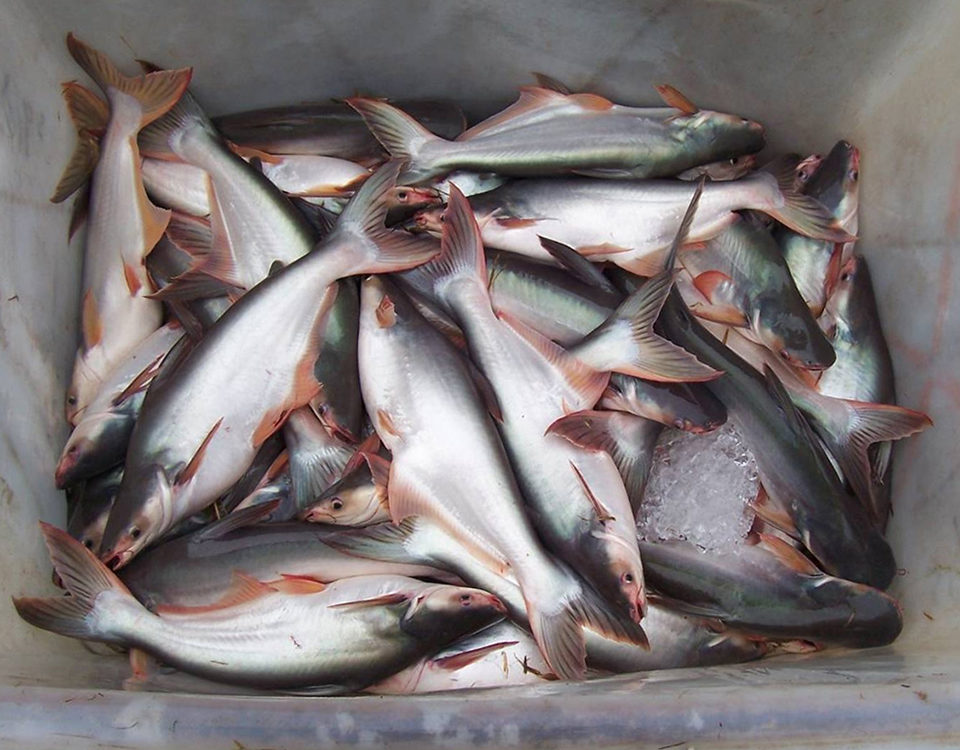
The Asian catfish (Pangasianodon hypophthalmus), commonly known as pangasius, has achieved impressive success as a commercial aquaculture species. Its production levels and distribution in global markets are now similar to that of other established top-tier aquaculture species such as tilapia, shrimp and salmon. While global markets for the latter species matured over the past 20 years, pangasius aquaculture has developed impressively within the last decade.
Pangasius are native to Southeast Asia, where more than 90 percent of the commercial production occurs in Vietnam. The country currently has production of around 1.3 mmt annually with export revenues over U.S. $1 billion. Due to the commercial success of pangasius, other Asian countries are adopting or expanding its culture, but there is currently no commercial production of pangasius in the Western Hemisphere.
Growing exports
Principal markets for pangasius have been established in Europe, the United States and Russia, although the product is exported to more than 100 countries worldwide. Most recently, the fastest-growing markets have been in Central and South America.
Mexico is now the fifth-largest importer of pangasius in the world, while other Latin American countries such as Colombia, Brazil and Costa Rica have shown notable increases in recent years. (Table 1). Ironically, these countries are also recognized as large-scale producers of tilapia for domestic consumption and export.
McGee, Pangasius imports to selected markets in Latin America, Table 1
| January-June 2009 Market | January-June 2009 Volume (mt) | January-June 2009 Value (U.S. $) | January-June 2010 Volume (mt) | January-June 2010 Value (U.S. $) | January-June 2010 Volume Change (%) |
|---|---|---|---|---|---|
| Spain | 26,748 | 66,569,079 | 27,540 | 62,100,783 | 3.0 |
| United States | 18,027 | 55,596,368 | 20,932 | 65,573,358 | 16.1 |
| Mexico | 12,392 | 29,555,819 | 17,048 | 37,331,536 | 37.6 |
| Colombia | 2,416 | 5,129,607 | 5,413 | 11,592,872 | 124.0 |
| Dominican Republic | 1,811 | 3,614,426 | 1,688 | 3,205,409 | -0.1 |
| Costa Rica | 717 | 1,791,889 | 951 | 2,310,984 | 32.6 |
| Brazil | 518 | 1,108,330 | 5,814 | 11,962,768 | 1,022.0 |
| Chile | 243 | 644,675 | 587 | 1,427,981 | 141.6 |
| Peru | 257 | 673,232 | 519 | 1,295,027 | 102.0 |
| Puerto Rico | 193 | 631,720 | 286 | 832,552 | 48.2 |
Source: Adapted from VASEP reporting.
Potential responses
Tilapia and pangasius are both freshwater whitefish aquaculture species that potentially compete for similar markets. The growing importation of pangasius to aquaculture-producing nations of Latin America creates circumstances where this introduced product could negatively impact future aquaculture development, established producers, domestic sales and revenues generated from exports.
The challenge to tropical producing nations in the west is how best to respond to the growing pangasius imports. Three alternatives can be considered:
- Allow pangasius imports to continue and wait to see at what point the markets stabilize.
- Pursue protectionist policies through the application of tariffs or changes in sanitary regulations, or by creating a negative image of the pangasius product.
- Compete by considering the introduction of pangasius as a new aquaculture species.
The first option is the normal course of action when pangasius products begin to appear on the market. As imports of pangasius increase, they can reach levels that instigate negative feedback, usually from domestic aquaculturists or fishermen who feel threatened by the competition. This obligates many importing nations to adopt the second option and create obstacles to further increases in importation.
Import restrictions
The United States permitted pangasius imports to enter duty free until 2002, when complaints from domestic catfish producers led to the application of antidumping tariffs and a law enacted to prevent labeling pangasius as catfish. Continued growth of pangasius imports into the U.S. recently resulted in even more-restrictive tariffs, as well as proposed changes to inspection protocols.
Brazil established trade relations with Vietnam, but has blocked further pangasius imports, citing concerns about product quality while admitting to additional considerations regarding competition with domestic fishery and aquaculture products. Mexico recently blocked the entry of shipments of pangasius from Vietnam and tilapia from China, citing cholera contamination.
Additional examples of governments restrictions on pangasius imports have occurred in Egypt, Russia, Italy and Spain, among other countries. Most of these cases cite sanitary concerns as the principal reason to temporarily ban imports. In most circumstances, imports are reinstated, but the negative publicity created by these events tends to affect consumer perceptions of product quality, effectively reducing additional importations.
The specter of protectionism is inherent to many of these machinations regarding importations but occurs for the simple reason that pangasius is a truly superior aquaculture species in terms of its production and marketability. For this reason, a reasonable case can be made to consider option three, the introduction of pangasius culture to suitable tropical areas of the Western Hemisphere.
Introduction of pangasius
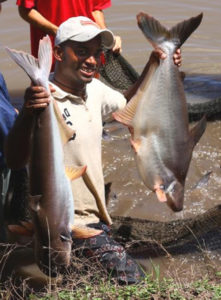
The introduction of a new species for aquaculture always raises concerns related to potential environmental impacts. To evaluate the suitability of pangasius for introduction into tropical areas of Latin America, it is useful to compare the species with tilapia, which were widely introduced in the region over the last 40 years.
Tilapia exhibit many positive traits as an aquaculture species but are also recognized as a highly invasive species. Wherever tilapia were introduced in tropical regions of the world, they established feral populations. They spawn naturally in a wide range of aquatic habitats, and mature and reproduce precociously, leading to undesirable overpopulations of stunted, unmarketable fish.
They provide intensive parental care, ensuring high survival of young, and disrupt habitats with nest building and territorial behavior. Furthermore, tilapia can predate on other fish and larger invertebrates. Despite these negative attributes, tilapia introductions have generally been considered positive when socioeconomic factors as well as environmental issues are assessed.
Pangasius have not been introduced for aquaculture outside tropical regions of Asia, although they are available as an ornamental species for the aquarium trade in many countries. P. hypophthalmus have not been reported to spawn naturally outside historical spawning areas in the Mekong River Delta of Southeast Asia. Even in their native range, reproduction for aquaculture purposes is dependent on hormone-induced spawning.
Pangasius do not reproduce in pond environments and require two to three years to reach sexual maturity. Fish produced in aquaculture are normally harvested after six to eight months, well before sexual maturity.
Under natural conditions, they are primarily benthic omnivores that derive nutrition from bacteria, detritus, vegetative material and invertebrates found in sediments. Adult pangasius can grow to more than 20 kg and live more than 20 years, but they are not obligate predators on other fish species.
Pangasius are highly fecund and can produce more than 60,000 eggs per kg but provide no parental care for the eggs or fry. The larvae, which hatch in 24 hours at only 3 mm in length, are dispersed by river currents and are highly vulnerable to predation and natural mortality. Pangasius do not disrupt habitats during spawning or exhibit territorial behavior that impacts other fish species. Based on these criteria, pangasius are seemingly more benign than tilapia and should represent less risk as an introduced aquaculture species.
Immediate challenge
The increasing imports of pangasius to tropical aquaculture-producing nations of the Western Hemisphere present an immediate challenge to an aquaculture industry that would likely benefit from diversification in order to sustain development. Currently, pangasius are cultured at Caribe Fisheries Inc. in Puerto Rico and have recently been introduced to the Dominican Republic, Haiti and Jamaica.
In Mexico, pangasius are available as an ornamental species, and interest in their aquaculture potential is strong. Additional countries in the region are seriously considering the species’ potential. However, much of this initiative comes from private-sector producers who cannot or should not initiate pangasius culture without government approval.
Ideally, governments in each country should develop in conjunction with interested producers a plan for the evaluation of pangasius that incorporates teaching of best aquaculture practices already established for the species. In this way, the risks of negative environmental or economic impacts can be minimized while permitting development of an organized and sustainable industry.
Perspectives
The final determination of the importance of pangasius in future aquaculture development in Latin America remains to be seen. Current market demand for the product in the Western Hemisphere is strong, and realistically pangasius could have a role to play in strengthening and diversifying the aquaculture industry in the region.
This opportunity should be evaluated to determine its potential to meet the challenge presented by burgeoning imports from Asia while contributing to the necessary goal of increasing the production of proven and sustainable aquaculture species worldwide.
(Editor’s Note: This article was originally published in the November/December 2010 print edition of the Global Aquaculture Advocate.)
Now that you've reached the end of the article ...
… please consider supporting GSA’s mission to advance responsible seafood practices through education, advocacy and third-party assurances. The Advocate aims to document the evolution of responsible seafood practices and share the expansive knowledge of our vast network of contributors.
By becoming a Global Seafood Alliance member, you’re ensuring that all of the pre-competitive work we do through member benefits, resources and events can continue. Individual membership costs just $50 a year.
Not a GSA member? Join us.
Author
-
Michael V. McGee, Ph.D.
Caribe Fisheries Inc.
Bo. La Plata
Rd. 117 Km 9.9 Interior
Lajas, Puerto Rico 00667[109,111,99,46,104,115,105,102,101,98,105,114,97,99,64,101,101,103,99,109,118,109]
Tagged With
Related Posts
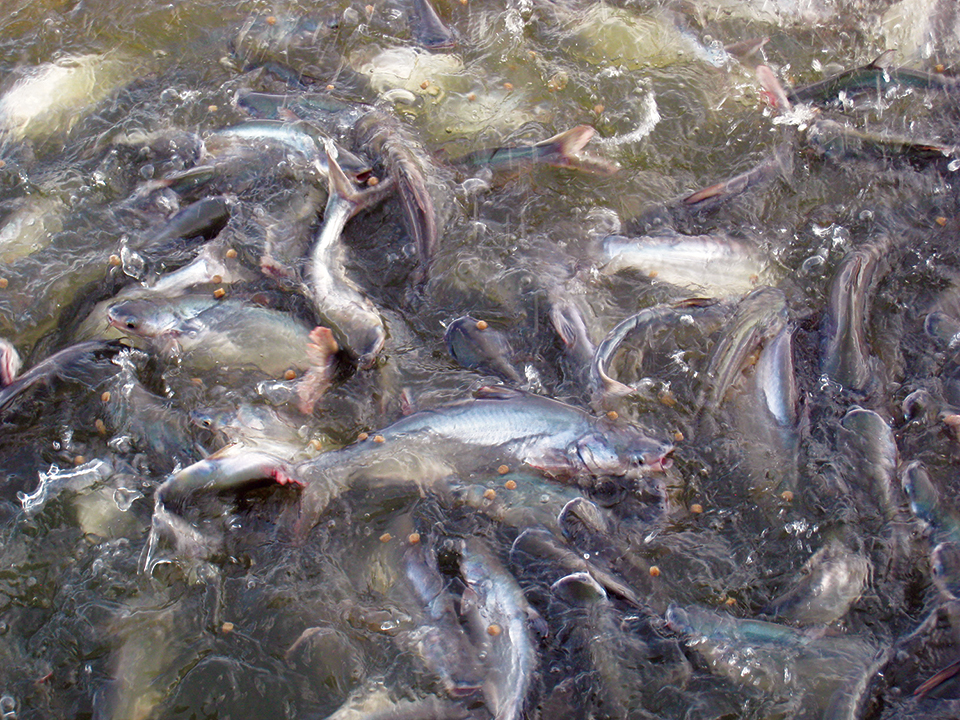
Health & Welfare
Amino acid supplementation reduces protein levels in pangasius diets
Trials show that supplementation with amino acids could reduce protein levels from a typical 28 percent to 23 percent in pangasius diets.
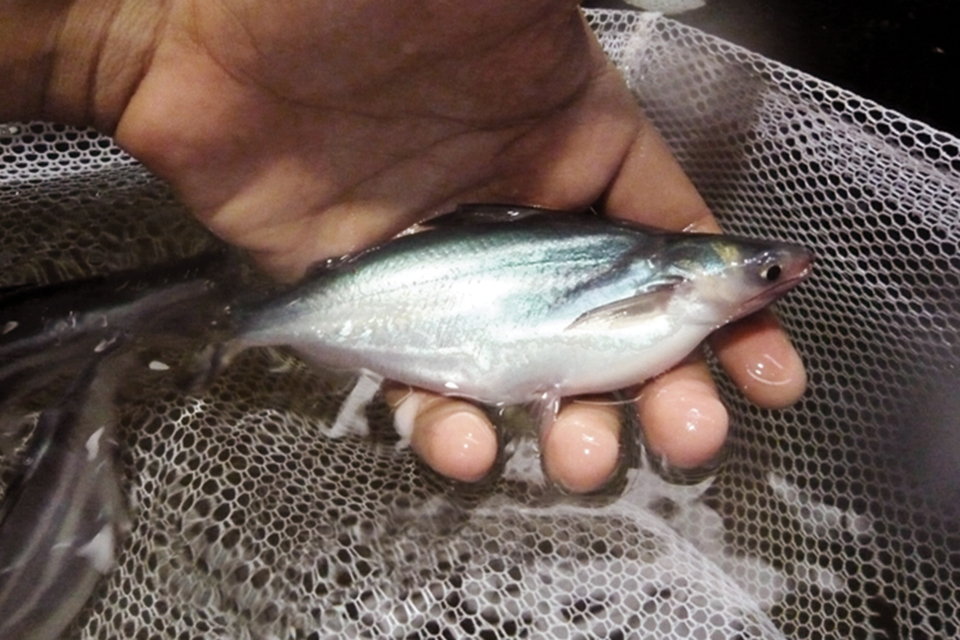
Health & Welfare
Dietary acidifier potassium diformate improves growth, survival in pangasius
As examined in various studies, potassium diformate can improve the growth and health status of pangasius when the dietary acidifier is included in feed.

Aquafeeds
Aquaculture Exchange: Andrew Jackson, IFFO
Aquaculture remains dependent on fishmeal and fish oil, crucial marine ingredients in aquafeeds, particularly at key life stages. Andrew Jackson, technical director at IFFO and one of the world’s foremost fishmeal experts, tells the Advocate that the two industries can coexist well into the future if properly managed.
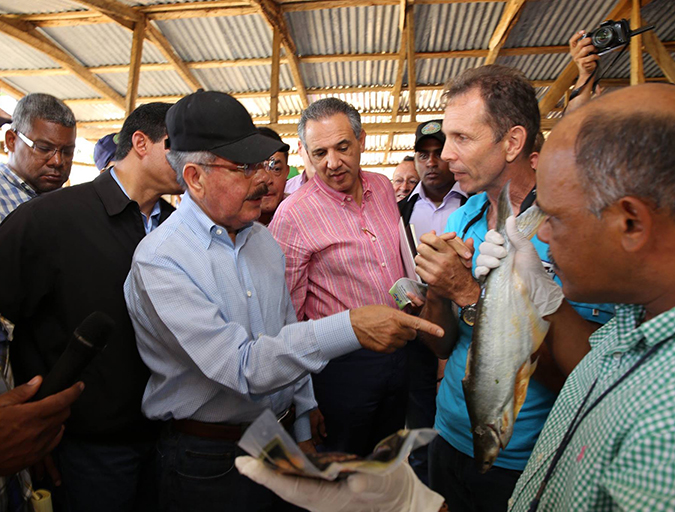
Innovation & Investment
Caribbean producer aims to make a name for sutchi
Pangasius farmed in the Dominican Republic? True story. Value Aquaculture, with partners hailing from Germany and Chile, is trying to get U.S. buyers to take a fresh look at the Mekong catfish species.


